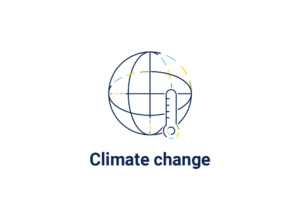Broadcast Networks Europe (BNE) welcomes the opportunity to share its views within the Questionnaire on the Role of Radio Spectrum Policy to help combat Climate Change:
We would like to focus our response on question 16) of the Questionnaire on the Role of Radio Spectrum Policy to help combat Climate Change
“16) Taking into account the scope of the work of the RSPG above, do you wish to share other thoughts or ideas which could be helpful to the RSPG to identify the role radio spectrum policy can play to help combat climate change and mitigate other adverse environmental impacts?”
BNE and its members, are committed to responsibly combating climate change. So, we recognise the importance, relevance and momentum of a stronger engagement from RSPG in the combat against climate change.
Together with some other stakeholders, BNE took the initiative to assess the carbon footprint of the terrestrial distribution of audiovisual content. This is Carnstone’s recent LOCAT study which shows that broadcasting content via DTT is much more efficient in terms of energy consumption compared to IP distribution. The study showed that this conclusion is valid in the long term and even for those cases where DTT penetration is low. At the European scale, a future scenario in which the distribution of linear content is via DTT and on-demand content is via internet in OTT mode would help in the battle against climate change. The innovation roadmap for terrestrial broadcasting which is based on standardized technologies3 ensures that such energy-efficient complementarity of platforms is also seamless for the user.
Terrestrial television is a modern and environmentally friendly way to enjoy television. According to the LoCaT study it offers considerable advantages over internet streaming (OTT mode) and managed IPTV.
Currently Digital Terrestrial Television consumes 8 times less energy than internet streaming (OTT mode) and 11 times less than managed IPTV. Future scenarios with the highest usage of Digital Terrestrial Television show lowest aggregate energy usage and CO2 emissions (see https://thelocatproject.org/).
A strong Digital Terrestrial Television base is a great asset for the European Digital infrastructure and for the European audiovisual sector in order to reach the Green Deal targets. The use of 5G Broadcast technology can serve even many more end users over the digital antenna and significantly reduce the ever-growing video streaming load on broadband networks. From our point of view, this would also achieve an even more beneficial climate effect. Spectrum policy can play a very important role in order to help combat climate change and mitigate other adverse environmental impacts by supporting “No Change” in the allocation of the UHF Band at WRC-23 and advocating for a neutral, non-prejudicial wording for the UHF agenda item for WRC 2031.
This would extend and reinforce certainty for the European Broadcasting industry regarding its access to the 470-694 MHz band which will be beneficial to reduce the climate impact of the overall sector of content distribution.
BNE would be happy to share more information on the LoCaT study and further collaborate with RSPG on this as the goal is fully shared, let’s leave a better world and let’s work together on the “twin revolution”, digital and green.
Download the position paper here

